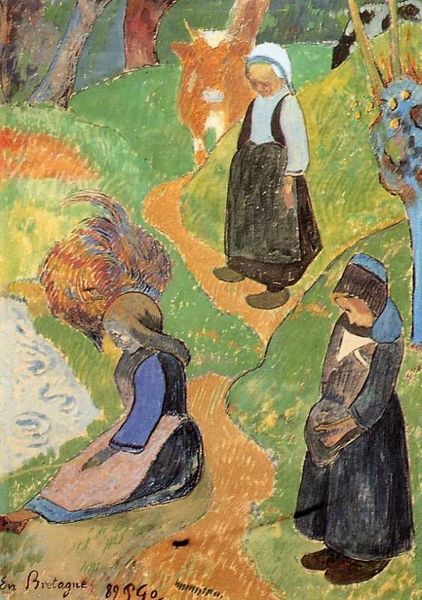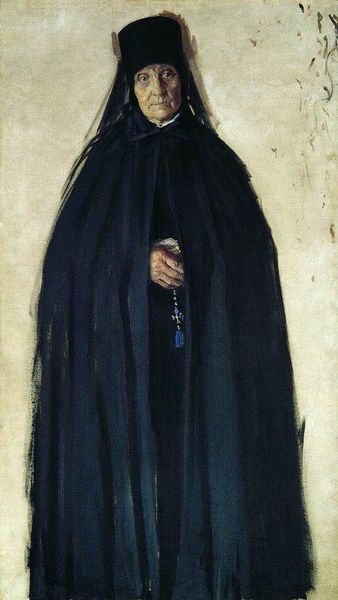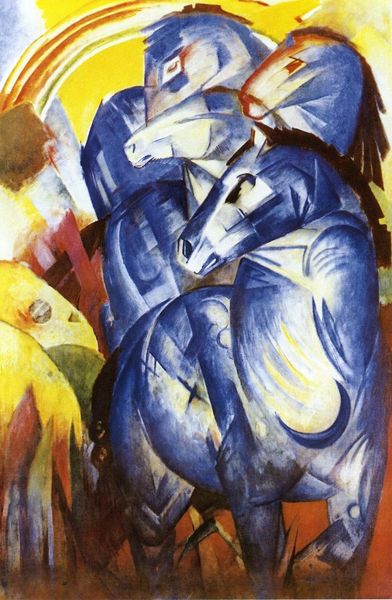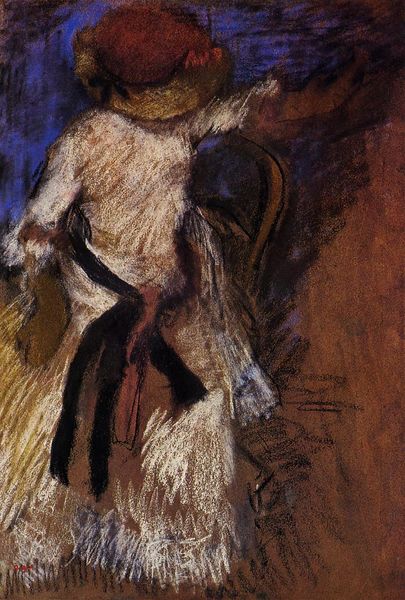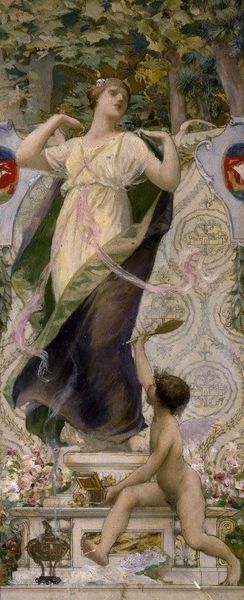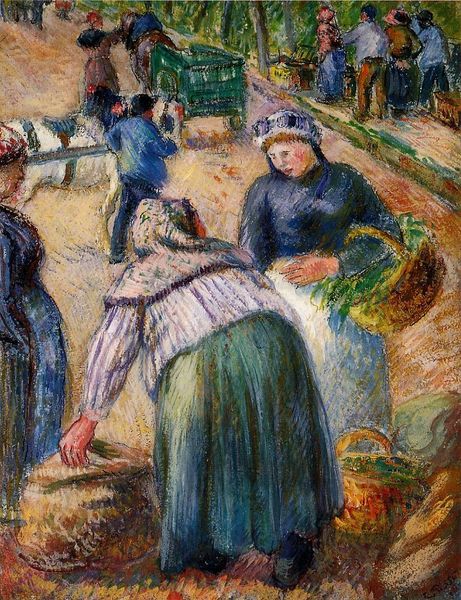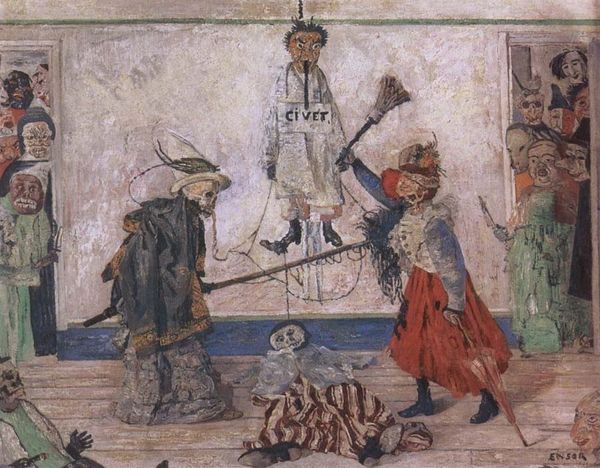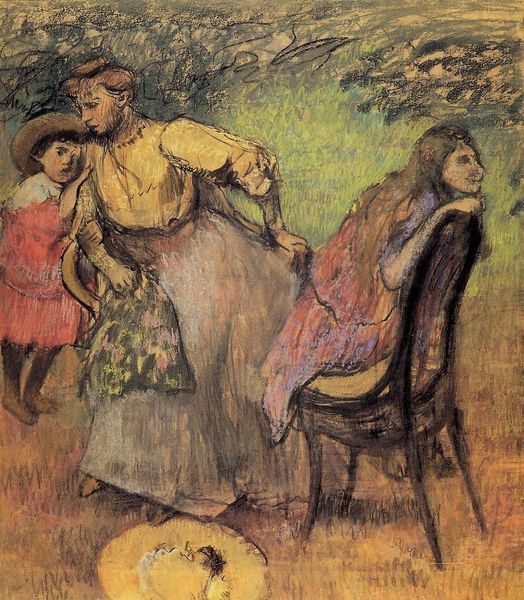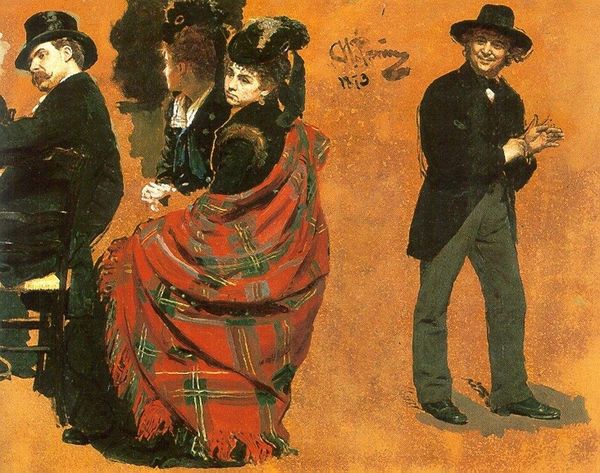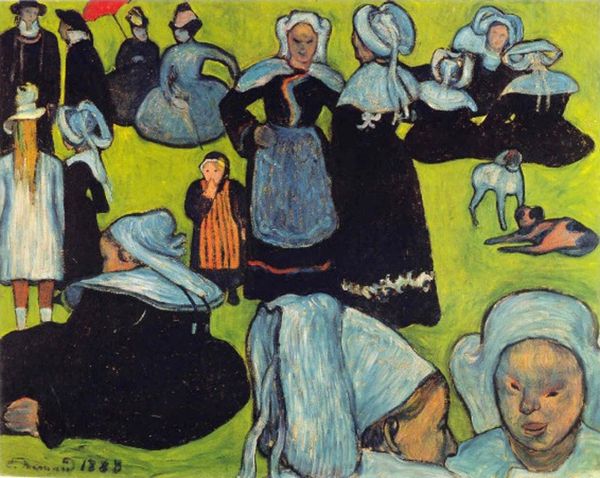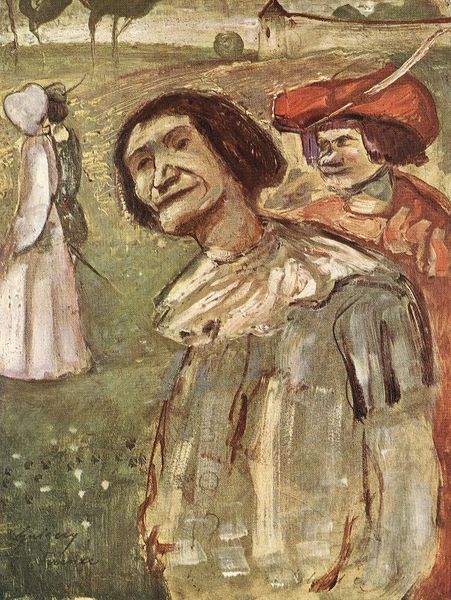
oil-paint
#
portrait
#
impressionism
#
oil-paint
#
landscape
#
painted
#
oil painting
#
costume
#
genre-painting
Dimensions: 42.2 x 32.1 cm
Copyright: Public domain
Curator: Let's take a moment to appreciate Édouard Manet's "Women at the Races," created in 1865 with oil on canvas. Editor: My immediate impression is one of reserved anticipation, there's a stillness despite the implied energy of the race. It's like they're holding their breath. Curator: That's astute. Manet captured a particular kind of public spectacle that catered to, and simultaneously constructed, bourgeois feminine identity. Racecourses, in their inception, allowed women, usually confined, to publicly socialize and even occupy some traditionally masculine arenas of business. Editor: So it's a gendered space of leisure and class performance. Are the costumes relevant to this social role? Curator: Precisely. Consider their elaborate attire – it functions almost like a uniform signaling their position, whilst subtly subverting their place within the domestic realm. Each bonnet, umbrella, and carefully chosen color participates in constructing the politics of dress as a feminine claim to representation and influence. Editor: But beyond mere representation, how did Manet’s artistic choices challenge or support this construct? Curator: His technique is as crucial as the subject matter. The visible brushstrokes and unfinished quality mirror the fleeting nature of such public displays. He challenges academic tradition, questioning the stable, fixed representations of women which were, during that period, largely the purview of a male gaze in control. He suggests dynamism where before, women were mostly depicted passively. Editor: This impressionistic rendering is very conscious of what those races implied: speed, technology and movement in a new world. It becomes evident that the ladies can also be agents in that era. Curator: Definitely! The act of witnessing itself empowers these women within their particular social strata, while this artwork encapsulates a vital point in their emergence into wider cultural visibility and participation. Editor: Considering this intersectional narrative sheds light on this work's multilayered meaning beyond a surface reading. Curator: Indeed. It prompts us to analyze the intersections of class, gender, and representation. Editor: Well, I can't look at the work without considering its political and historical depth now. Curator: A new perspective has allowed to see these woman as agents and participants, rather than simple passive spectators, right?
Comments
No comments
Be the first to comment and join the conversation on the ultimate creative platform.
